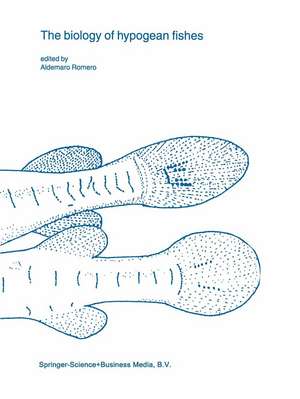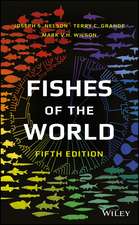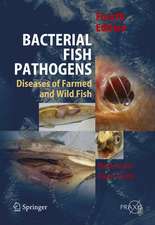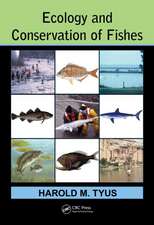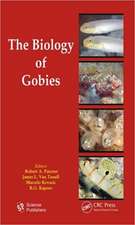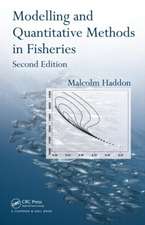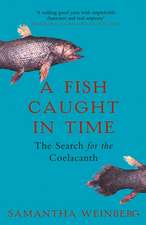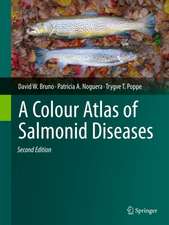The biology of hypogean fishes: Developments in Environmental Biology of Fishes, cartea 21
Editat de Aldemaro Romeroen Limba Engleză Paperback – 4 dec 2010
| Toate formatele și edițiile | Preț | Express |
|---|---|---|
| Paperback (1) | 1214.07 lei 38-44 zile | |
| SPRINGER NETHERLANDS – 4 dec 2010 | 1214.07 lei 38-44 zile | |
| Hardback (1) | 1227.33 lei 38-44 zile | |
| SPRINGER NETHERLANDS – 31 dec 2001 | 1227.33 lei 38-44 zile |
Din seria Developments in Environmental Biology of Fishes
- 15%
 Preț: 632.01 lei
Preț: 632.01 lei - 18%
 Preț: 1230.21 lei
Preț: 1230.21 lei - 18%
 Preț: 1231.01 lei
Preț: 1231.01 lei -
 Preț: 406.05 lei
Preț: 406.05 lei - 24%
 Preț: 810.09 lei
Preț: 810.09 lei - 24%
 Preț: 1058.74 lei
Preț: 1058.74 lei -
 Preț: 413.92 lei
Preț: 413.92 lei - 18%
 Preț: 956.69 lei
Preț: 956.69 lei - 18%
 Preț: 1236.99 lei
Preț: 1236.99 lei - 18%
 Preț: 1230.67 lei
Preț: 1230.67 lei - 18%
 Preț: 947.67 lei
Preț: 947.67 lei - 24%
 Preț: 787.41 lei
Preț: 787.41 lei - 24%
 Preț: 911.54 lei
Preț: 911.54 lei - 18%
 Preț: 1237.61 lei
Preț: 1237.61 lei - 24%
 Preț: 1067.70 lei
Preț: 1067.70 lei - 15%
 Preț: 643.34 lei
Preț: 643.34 lei - 18%
 Preț: 954.14 lei
Preț: 954.14 lei - 18%
 Preț: 1220.88 lei
Preț: 1220.88 lei - 24%
 Preț: 805.38 lei
Preț: 805.38 lei - 18%
 Preț: 959.98 lei
Preț: 959.98 lei - 24%
 Preț: 830.77 lei
Preț: 830.77 lei - 24%
 Preț: 1036.48 lei
Preț: 1036.48 lei - 15%
 Preț: 634.00 lei
Preț: 634.00 lei - 24%
 Preț: 1043.48 lei
Preț: 1043.48 lei - 18%
 Preț: 1225.79 lei
Preț: 1225.79 lei - 24%
 Preț: 1470.74 lei
Preț: 1470.74 lei
Preț: 1214.07 lei
Preț vechi: 1597.46 lei
-24% Nou
Puncte Express: 1821
Preț estimativ în valută:
232.33€ • 241.09$ • 194.20£
232.33€ • 241.09$ • 194.20£
Carte tipărită la comandă
Livrare economică 11-17 martie
Preluare comenzi: 021 569.72.76
Specificații
ISBN-13: 9789048158485
ISBN-10: 9048158486
Pagini: 380
Ilustrații: 376 p. 85 illus., 2 illus. in color.
Dimensiuni: 210 x 279 x 20 mm
Ediția:Softcover reprint of the original 1st ed. 2001
Editura: SPRINGER NETHERLANDS
Colecția Springer
Seria Developments in Environmental Biology of Fishes
Locul publicării:Dordrecht, Netherlands
ISBN-10: 9048158486
Pagini: 380
Ilustrații: 376 p. 85 illus., 2 illus. in color.
Dimensiuni: 210 x 279 x 20 mm
Ediția:Softcover reprint of the original 1st ed. 2001
Editura: SPRINGER NETHERLANDS
Colecția Springer
Seria Developments in Environmental Biology of Fishes
Locul publicării:Dordrecht, Netherlands
Public țintă
ResearchCuprins
An introduction to the special volume on the biology of hypogean fishes.- It’s a wonderful hypogean life: a guide to the troglomorphic fishes of the world.- Scientists prefer them blind: the history of hypogean fish research.- Nontroglobitic fishes in Bruffey-Hills Creek Cave, West Virginia, and other caves worldwide.- 1. Anatomy, physiology and behavior.- The mechanosensory lateral line system of the hypogean form of Astyanax fasciatus.- Metabolic rate and natural history of Ozark cavefish, Amblyopsis rosae, in Logan Cave, Arkansas.- Locomotory responses of the cave cyprinid Phreatichthys andruzzii to chemical signals from conspecifics and related species: new findings.- Responses to light in epigean and hypogean populations of Gambusia affinis (Cyprinodontiformes: Poeciliidae).- Temporal organization in locomotor activity of the hypogean loach, Nemacheilus evezardi, and its epigean ancestor.- 2. Ecology and conservation.- Ecology of subterranean fishes: an overview.- Population biology and growth of Ozark cavefish in Logan Cave National Wildlife Refuge, Arkansas.- Threatened fishes of the world: Ophisternon infernale (Hubbs, 1938) (Synbranchidae).- How hydrogeology has shaped the ecology of Missouri’s Ozark cavefish, Amblyopsis rosae, and southern cavefish, Typhlichthys subterraneus: insights on the sightless from understanding the underground.- Habitat and population data of troglobitic armored cave catfish, Ancistrus cryptophthalmus Reis, 1987, from central Brazil (Siluriformes: Loricariidae).- The conservation status of hypogean fishes.- Threatened fishes of the world: Ogilbia pearsei (Hubbs, 1938) (Bythitidae).- Status of the federally endangered Alabama cavefish, Speoplatyrhinus poulsoni (Amblyopsidae), in Key Cave and surrounding caves, Alabama.- 3. Geneticsand evolution.- Genetic differentiation among populations of the cave fish Schistura oedipus (Cypriniformes: Balitoridae).- Origins and relationship of cave populations of the blind Mexican tetra, Astyanax fasciatus, in the Sierra de El Abra.- Threatened fishes of the world: Caecobarbus geertsii Boulenger, 1921 (Cyprinidae).- Morphological and physiological correlates of evolutionary reduction of metabolic rate among amblyopsid cave fishes.- Convergent adaptations to cave life in the Rhamdia laticauda catfish group (Pimelodidae, Teleostei).- A review of morphological and behavioural changes in the cave molly, Poecilia mexicana, from Tabasco, Mexico.- 4. Special cases.- Troglomorphic sculpins of the Cottus carolinae species group in Perry County, Missouri: distribution, external morphology, and conservation status.- Milyeringa Veritas (Eleotridae), a remarkably versatile cave fish from the arid tropics of northwestern Australia.- Mexican blindcats genus Prietella (Siluriformes: Ictaluridae): an overview of recent explorations.- A new blind cave fish population of genus Astyanax: geography, morphology and behavior.- Adaptations of cave fishes with some comparisons to deep-sea fishes.- Species and subject index.
